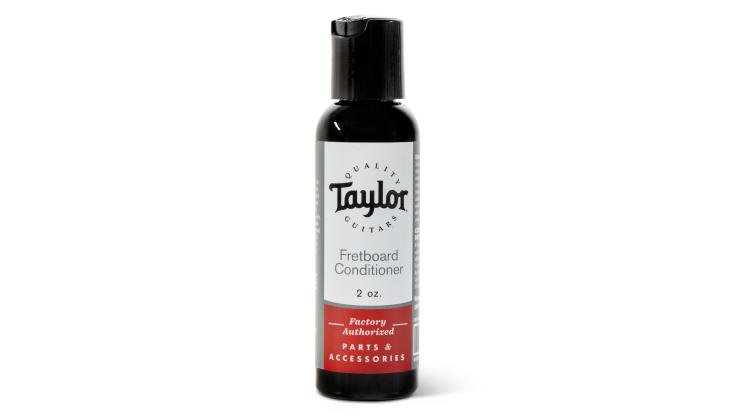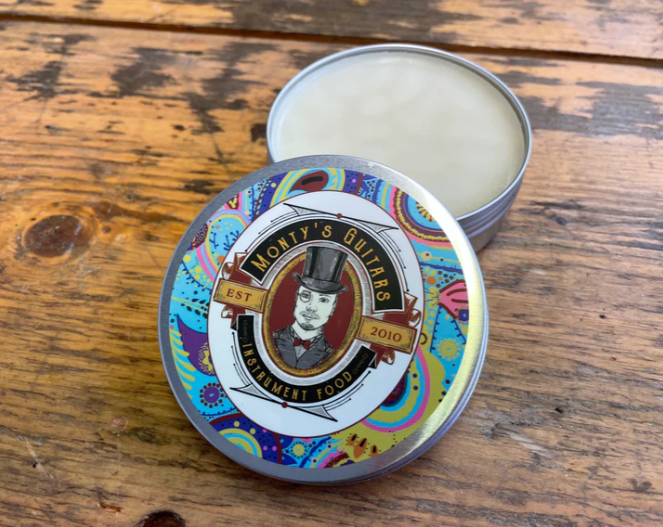Fretboards and Lemon Oil - Dispelling Myths
Hello folks,
I’ve recognized for some time that there are as many myths about fretboards and the function of lemon oil as there are truths, may be more so this time I want to talk about fretboard maintenance and where lemon oil or lemon oil based products fit it.
Snake Oil
I have to confess that sometimes I feel like I’m being sold a bottle of snake oil if you believe some of the claims about fretboard cleaners and reconditioners. We don’t have to feel this way, if we take a bit of time to think this stuff through.
Cleaning the Fretboard
If you’ve ever worked with an engine, you’ve gotten grease and oil on your hands. You’ve also probably used one of those mechanic’s hand cleaners that contain pumice and some kind of citrus oil. I will not recommend pumice on your fretboard, but lemon oil or one of the massively overpriced secret sauces that contain citrus oils are superb cleaners. That’s what they do. Rub some in and then buff it out with a clean dry cloth. Be sure to use a swab or some other method to ensure that liquid is not building up along the edges of the frets.
Myth One
There is no reason not to clean a maple board whether sealed or not if you wish to do so. I know that it’s fashionable to want that aged staining on your maple Telecaster board for some, personally I don’t like the look, so I keep my maple boards clean.
Myth Two
The thing to note about lemon and citrus oils is that they are cleaners, not conditioners so if you have heard or read that citrus oils recondition the fretboard it is simply not true. In fact, they dry out the wood, and the more open the pores, such as you will find on a rosewood fingerboard are hurt the most by this. Use lemon oil cleaners as cleaners but don’t stop there.
Conditioning the Fretboard
Maple boards if unsealed have very tight pores and do not require much in the way of conditioning. Sealed maple boards are sealed and cannot be conditioned. The same is true for other sealed boards as you will find on some guitars like Rickenbackers. Clean them for sure, but you cannot condition a sealed board. Most rosewoods, ebonys, padauks and other medium to open grain woods all benefit from conditioning. Obviously, you cannot condition a sealed board of any kind but you can make a difference for all boards even if they are sealed.
Using a Soft Wax
A wax does recondition the board because it imparts some moisture and then seals it in. If your board is sealed, the wax puts a nice smooth surface on things, and you will find the board feels faster. The key is in the application and the buffing. I know some folks who use very expensive automobile waxes. I encourage caution, because a lot of these products contain more than just wax that can gum up over time, so my recommendation is a simple wax made for fretboards typically from beeswax, which is a nice soft wax, that is easy to apply and easy to buff off. You also don’t have to let the board sit for a while until buffing, about five minutes rest time is all that you need. I’ve tried a number of options, and my present choice is Monty’s Instrument Food from Monty’s Guitars in the UK. If you have a rosewood board that you feel is not dark enough, consider their Montypresso which is the wax with a stain mixed in, but use carefully as it is wax with a wood stain. If you are not willing to order from the UK, Taylor’s Fretboard Conditioner is another excellent choice. It is quite thick, so I rub it into the board with a fingertip and then buff it off. I do not use this on maple boards though.
The thing to remember with a wax is to apply not too generously, give it a rub and then buff it off with a clean dry cloth. How often you rewax the board is up to you and is highly dependent on your locale, local humidity and how hard the guitar gets worked.
What About Cleaning Frets?
There are myriad fret cleaning tools. Years ago, the tech I worked with showed me a very simple method that was inexpensive and worked a charm. I still use it today. The goal is to clean off any light corrosion and remove any grit. You are not polishing the frets. In fact, if you are not trained, don’t polish frets yourself, a great tech will do the job better and faster.
I use a set of fingerboard shields that are made of metal and sit on the fretboard with only the fret exposed. I have had mine for a long time and got them from Stewart MacDonald although these days you can get them cheap on Amazon. The idea is to use the one that only exposes the fret and none of the board, particularly if the board is sealed or maple. Next head to the hardware store and buy a package of #0000 steel wool. That pack will last you a long time, cost very little and be even more flexible than one of those fret polish sticks. Finally get yourself some painter’s masking tape. The steel wool, or any similar tool is going to produce some metal detritus so put tape over your pickups completely as they are magnets and will attract that metallic crap to their detriment. Some folks tape off the fretboard instead of using the shields and that works too, it just adds time. If you do like to clean your frets, do it BEFORE you clean your fretboard. Just go over each fret with a bit of steel wool rubbing gently, changing the surface of the steel wool regularly. Then throw it away. Steel wool is cheap. Now use your fretboard cleaner on a soft cloth to wipe down the fret surfaces. You can do this when cleaning the fretboard, it does not have to be a separate step.
Wrapping It Up
Cleaning and conditioning your fretboard adds no more than 10 minutes to a string changing session. I do it whenever I change strings because it’s so quick. If I add in the cleaning of the frets, that might add 5 more minutes, which I consider time well spent.
You spent good money on your instrument. Simple care helps it last and indeed play better, so learn to do it, invest the time and lengthen the life of your instrument.




